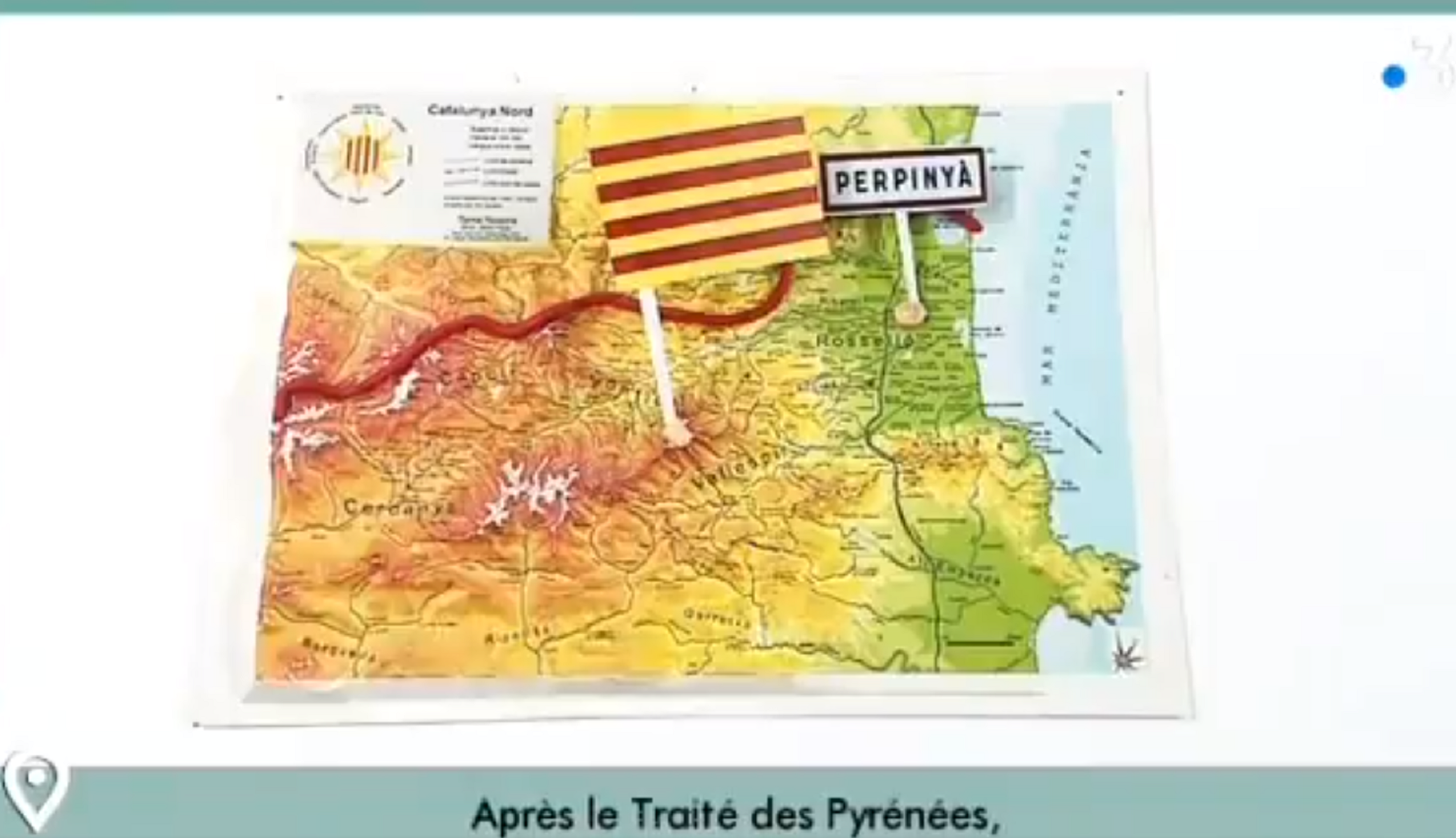French public TV channel France3 has demystified the concept of the "natural border" between France and Spain in its programme Petits papers, broadcast in Catalan for the Northern Catalonia audience.
The programme looks backs into the history of Northern Catalonia, and notes how this territory to the north of the Pyrenees has not always been part of France, despite the presence of the mountain chain that could act as a natural border, in line with a classic French nationalist theory.
El mite de la frontera natural, nou vídeo fet a mà pel programa en català de la tv pública France 3 pic.twitter.com/GDuX1CHJzs
— Júlia Taurinyà (@JuliaTaurinya) 30 de març de 2019
"The concept of the natural border was born at the end of the 17th century and was expanded with the French Revolution, when it was necessary to impose the idea of the nation-state," explains the programme, showing graphically the concept of a France bordered by the Atlantic Ocean, the Rhine, the Alps, the Mediterranean - and the Pyrenees. "History, however, teaches us that there is nothing more flexible than a border and we should know that well enough," continues the commentary, in French-accented Catalan with French subtitles.
The mini-programme then focuses on the example of Catalonia, showing how the northern Catalan counties of Roselló, Conflent and half of Cerdanya, were transferred to the Kingdom of France under the Treaty of the Pyrenees in 1659. "It took many years before the new border was defined, with some very strange elements, such as that of the town of Llívia, which managed to escape from the list of municipalities that were to become French," concludes the voiceover.
Llívia remains today as a political island, an enclave belonging to Spain in the middle of French territory. But the Catalan language and culture on both sides of the convoluted frontier provide a strong counterpoint of continuity.

